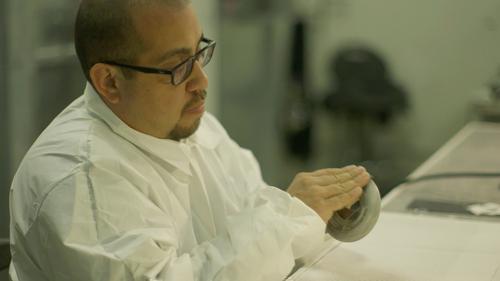Rapid Prototyping Advances with Inkjet-Based 3D Printing
August 20, 2015

If you're looking to enhance your in-house 3D printing capabilities or just entering the 3D printing sphere through outsourcing services, I'll be teaching a free three-day Design News Focus on Fundamentals online course (45 minutes per day) Aug. 25-27, where I'll share Stratasys Direct Manufacturing's tips for manufacturing with inkjet-based prototyping. We've accumulated process control expertise for over a decade of working with inkjet-based 3D printing. During Day One of the course, I'll discuss the major 3D printing processes available today and how inkjet-based printing compares. On Day Two, I'll cover the benefits of inkjet-based printing and available materials, as well as finishing techniques that complete your prototype. On Day Three, I'll discuss the latest breakthroughs in inkjet printing technology. Throughout the course, you'll hear about material developments as well as our own success stories working with inkjet-based printing.

Inkjet-based printing begins with a 3D CAD model. The process uses photopolymer resins in a material jetting technique. Resins are deposited and cured simultaneously in incredibly thin layers, at 0.0006 inch, beating out all other 3D printing technologies in terms of resolution. While inkjet-based materials aren't intended for rugged applications, photopolymers that simulate the properties of rigid plastics, called "digital-ABS plastics," provide a bridge for designers between prototypes and their desired plastic end-parts.
MORE FROM DESIGN NEWS: 3D CAD Is Saving Time and Resources in the Entire Design Process
Inkjet-based printing is the leading 3D printing technology for high-fidelity prototypes and models. It's been an invaluable resource as a master pattern for a number of cold mold techniques for the past decade thanks to its smoother surfaces and fine detail recreation. Inkjet-based printing has been the driver behind thousands of new ideas at Stratasys Direct Manufacturing, helping to spearhead new products with accurate part recreations at one-day turnaround speeds. The most exciting area of advancement in inkjet printing today is its ability to print a part with both digital-ABS plastic and rubber-like plastic simultaneously. The technology affords gradations of durometers in dozens of color pairings.
Stratasys Direct Manufacturing was formed this past February, after Stratasys acquired Solid Concepts and Harvest Technologies, two leading 3D printing and additive manufacturing service bureaus, and merged them with its own service bureau, RedEye Services.
Join me to learn:
· How you can incorporate 82 material characteristics within a single part built on single platform
· What 3D printing solutions are available to you and how they compare
· Hybrid materials and their properties
· Best post-processing methods, how to prepare master patterns, and bond parts
· Multi-material printing case examples.
This free course is sponsored by Stratasys, and you can register for it here.

Mychal Anderson is an applications engineer with Stratasys Direct Manufacturing. He has spent four years in the additive manufacturing industry. He has extensive knowledge in the finishing and preparation of FDM and PolyJet 3D printed plastic parts. .
About the Author(s)
You May Also Like





